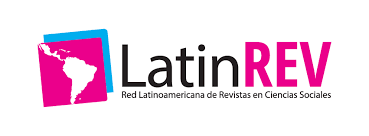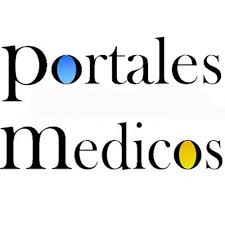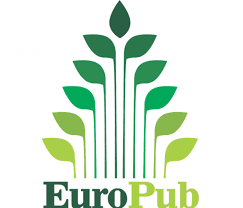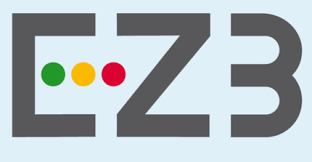Características clínico epidemiológicas y enfermedad renal crónica en pacientes con litiasis renal
Clinical epidemiological characteristics and chronic kidney disease in patients with renal lithiasis
Resumen
Actualmente se ha propuesto el papel de la litiasis renal como factor de riesgo para el desarrollo de enfermedad renal crónica (ERC). Al ser una patología frecuente, capaz de comprometer la calidad de vida de quién la padece, es importante revisar su papel como factor etiológico de ERC. El presente trabajo se desarrolló con el fin de describir las características clínicas y epidemiológicas de los pacientes con litiasis renal y su relación con la ERC. En la metodología de búsqueda se utilizó Pubmed, Scopus y Biblioteca Virtual de Salud incluyendo artículos de los últimos 5 años, con los términos lithiasis, nephrolithiasis, kidney calculi, chronic kidney disease, nefrolitiasis, piedras en el riñón y enfermedad renal crónica, artículos que incluyan litiasis renal y ERC. El número de artículos obtenidos a través de Pubmed fue 163, Scopus 231 y en la Biblioteca Virtual de Salud 65. De los 53 artículos seleccionados, se descartaron dos por ser artículos en francés. El resto de artículos se revisaron en su totalidad y finalmente, se seleccionaron 11 artículos de Scopus y 9 de Pubmed, obteniendo un total de 20 artículos. Los resultados obtenidos mostraron que litiasis renal se asocia con un mayor riesgo de desarrollar ERC. Se pudo concluir que la litiasis renal se presenta alrededor de los 51,3 años de edad, siendo más frecuente en la raza blanca, en el sexo masculino y en quienes tienen exceso de oxalato urinario y sobreproducción de uratos.
Currently, the role of renal lithiasis as a risk factor for the development of chronic kidney disease (CKD) has been proposed. As it is a frequent pathology, capable of compromising the quality of life of those who suffer from it, it is important to review its role as an etiological factor of CKD. The present work was developed in order to describe the clinical-epidemiological characteristics of patients with kidney stones and their relationship with CKD. In the search methodology, Pubmed, Scopus and Virtual Health Library were used, including articles from the last 5 years, with the terms lithiasis, nephrolithiasis, kidney calculi, chronic kidney disease, nephrolithiasis, kidney stones and chronic kidney disease, articles that include kidney stones and CKD. The number of articles obtained through Pubmed was 163, Scopus 231 and 65 in the Virtual Health Library. Of the 53 articles selected, two were discarded because they were articles in French. The rest of the articles were reviewed in their entirety and finally, 11 articles from Scopus and 9 from Pubmed were selected, obtaining a total of 20 articles. The results obtained showed that kidney stones are associated with a higher risk of developing CKD. It was possible to conclude that renal lithiasis occurs around 51.3 years of age, being more frequent in whites, in males and in those with excess urinary oxalate and overproduction of urates.
Palabras clave
Referencias
Abib, A., del Valle, E., Laham, G. y Spivacow, F. (2019). Vista de Litiasis renal y riesgo cardiovascular. Revista Nefrol Dial Traspl, 39(2), 126–133. https://www.revistarenal.org.ar/index.php/rndt/article/view/437/804
Adolfo, Á., Muñoz, H., Morelli Martínez, I., Cedeño, N., David Ruiz, E., Reynor, S., Salazar, J., Salazar, V., Génesis, C. y Chaves, M. (2020). Nefrolitiasis: Una revisión actualizada. Revista Clínica de La Escuela de Medicina UCR-HSDJ, 10(3), 11–18.
Ando, R., Nagaya, T., Suzuki, S., Takahashi, H., Kawai, M., Taguchi, K., Hamamoto, S., Okada, A. y Yasui, T. (2021). Independent and interactive effects of kidney stone formation and conventional risk factors for chronic kidney disease: a follow-up study of Japanese men. International Urology and Nephrology, 53(6), 1081–1087. https://doi.org/10.1007/S11255-021-02803-Z
Censos, I. (2019). Tabulados_series_ECEH_2019 (1).
Cohen, S. (2018). Crystalluria and Chronic Kidney Disease. Toxicologic Pathology, 46(8), 949–955. https://doi.org/10.1177/0192623318800711
Dhondup, T., Kittanamongkolchai, W., Vaughan, L., Mehta, R., Chhina, J., Enders, F., Hickson, L., Lieske, J. y Rule, A. (2018b). Risk of ESRD and Mortality in Kidney and Bladder Stone Formers. American Journal of Kidney Diseases, 72(6), 790–797. https://doi.org/10.1053/J.AJKD.2018.06.012
Gamboa Gutiérrez, E., Varela Villalobos, M., y Varela Briceño, C. (2020). Litiasis renal en Costa Rica: bioquímica y epidemiología. Acta Médica Costarricense, 62(2), 79–83. https://doi.org/10.51481/amc.v62i2.1065
García, H., Benavidez, P. y Posada, P. (2016). Fisiopatología asociada a la formación de cálculos en la vía urinaria. Urología Colombiana, 25(2), 109–117. https://www.elsevier.es/es-revista-urologia-colombiana-398-pdf-S0120789X16000046
Gras, C., Vázquez, L., Romero, E., Dolores, M. y Carrasco, L. (2017). Litiasis Renal. Revista Clinica de Medicina de Familia. España, 2(6), 8. https://www.redalyc.org/pdf/1696/169617650007.pdf
Haley, W., Enders, F., Vaughan, L., Mehta, R., Thoman, M., Vrtiska, T., Krambeck, A., Lieske, J. y Rule, A. (2016). Kidney Function After the First Kidney Stone Event. Mayo Clinic Proceedings, 91(12), 1744–1752. https://doi.org/10.1016/J.MAYOCP.2016.08.014
Imtiaz, S., y Alam, A. (2021). Strategies for preventing end stage kidney disease: The impact of kidney stone disease on Chronic Kidney Disease in Pakistan. JPMA. The Journal of the Pakistan Medical Association, 71(9), 2244–2246. https://doi.org/10.47391/JPMA.01-114
Kang, M., Kim, Y., Lee, H., Kim, D., Oh, K. H., Joo, K., Kim, Y., Chin, H. y Han, S. (2021). Renal outcomes in adult patients with horseshoe kidney. Nephrology Dialysis Transplantation, 36(3), 498–503. https://doi.org/10.1093/ndt/gfz217
Li, C., Chien, T., Wu, W., Huang, C., y Chou, Y. (2018). Uric acid stones increase the risk of chronic kidney disease. Urolithiasis, 46(6), 543–547. https://doi.org/10.1007/S00240-018-1050-1
Nassir, A., Saada, H., Alnajjar, T., Nasser, J., Jameel, W., Elmorsy, S. y Badr, H. (2018). The impact of stone composition on renal function. Urology Annals, 10(2), 215. https://doi.org/10.4103/UA.UA_85_17
Pozdzik, A., Maalouf, N., Letavernier, E., Brocheriou, I., Body, J., Vervaet, B., Van Haute, C. Van, Noels, J., Gadisseur, R., Castiglione, V., Cotton, F., Gambaro, G., Daudon, M. y Sakhaee, K. (2019). Meeting report of the “Symposium on kidney stones and mineral metabolism: calcium kidney stones in 2017.” Journal of Nephrology, 32(5), 681–698. https://doi.org/10.1007/S40620-019-00587-1
Rivera, M., Jaeger, C., Yelfimov, D., y Krambeck, A. (2017). Risk of Chronic Kidney Disease in Brushite Stone Formers Compared With Idiopathic Calcium Oxalate Stone Formers. Urology, 99, 23–26. https://doi.org/10.1016/J.UROLOGY.2016.08.041
Rojas, Y., y Gómez, E. (2021). Vista de Litiasis renal: una entidad cada vez más común. Expresiones Médicas, 30–36. http://erevistas.uacj.mx/ojs/index.php/expemed/article/view/4556/5042
Romero, N., Pérez, P., Pérez, J., Pérez, K., Reyes, J. y Rodríguez, A. (2019). Causas de enfermedad renal entre los pacientes de una unidad de diálisis. Revista Cubana de Urología, 8(1). http://revurologia.sld.cu/index.php/rcu/rt/printerFriendly/461/498
Shang, W., Li, L., Ren, Y., Ge, Q., Ku, M., Ge, S., y Xu, G. (2017a). History of kidney stones and risk of chronic kidney disease: a meta-analysis. https://doi.org/10.7717/peerj.2907
Shang, W., Li, L., Ren, Y., Ge, Q., Ku, M., Ge, S., y Xu, G. (2017b). History of kidney stones and risk of chronic kidney disease: a meta-analysis. PeerJ, 5(1), e2907. https://doi.org/10.7717/PEERJ.2907
Siener, R. (2021). Nutrition and kidney stone disease. Nutrients, 13(6). https://doi.org/10.3390/NU13061917
Susaeta, R., Benavente, D., Marchant, F., y Gana, R. (2018). Diagnosis and Management of Renal Stones in Adults and Children. Revista Clínica Las Condes, 29(2), 197–212. https://www.elsevier.es/es-revista-revista-medica-clinica-las-condes-202-articulo-diagnostico-manejo-litiasis-renales-adultos-S0716864018300270
Tanaka, Y., Hatakeyama, S., Tanaka, T., Yamamoto, H., Narita, T., Hamano, I., Matsumoto, T., Soma, O., Okamoto, T., Tobisawa, Y., Yoneyama, T., Yoneyama, T., Hashimoto, Y., Koie, T., Takahashi, I., Nakaji, S., Terayama, Y., Funyu, T. y Ohyama, C. (2017). The influence of serum uric acid on renal function in patients with calcium or uric acid stone: A population-based analysis. PloS One, 12(7). https://doi.org/10.1371/JOURNAL.PONE.0182136
Taype-Huamaní, W., Ayala-Garcia, R., Rodriguez-Gonzales, R. y Amado-Tineo, J. (2020). Characteristics and evolution of patients with urinary lithiasis in a tertiary hospital emergency. Revista de La Facultad de Medicina Humana, 20(4), 608–613. https://doi.org/10.25176/rfmh.v20i4.2922
Uribarri, J. (2020). Chronic kidney disease and kidney stones. Current Opinion in Nephrology and Hypertension, 29(2), 237–242. https://doi.org/10.1097/MNH.0000000000000582
Enlaces refback
- No hay ningún enlace refback.
Depósito Legal Electrónico: ME2016000090
ISSN Electrónico: 2610-797X
DOI: https://doi.org/10.53766/GICOS
| Se encuentra actualmente registrada y aceptada en las siguientes base de datos, directorios e índices: | |||
 | |||
 |  |  |  |
 |  | ||
 |  |  |  |
 |  |  |  |
 |  |  |  |
 |  | ||
![]()
Todos los documentos publicados en esta revista se distribuyen bajo una
Licencia Creative Commons Atribución -No Comercial- Compartir Igual 4.0 Internacional.
Por lo que el envío, procesamiento y publicación de artículos en la revista es totalmente gratuito.

